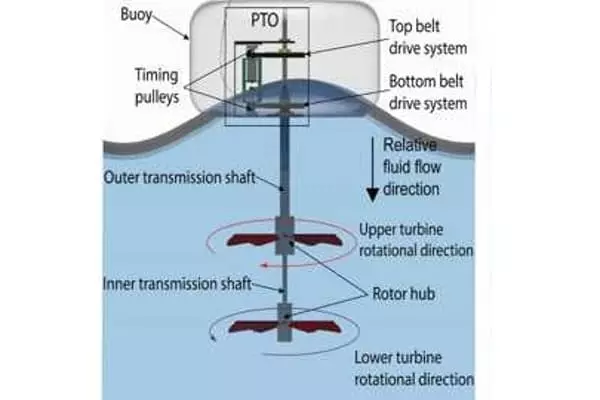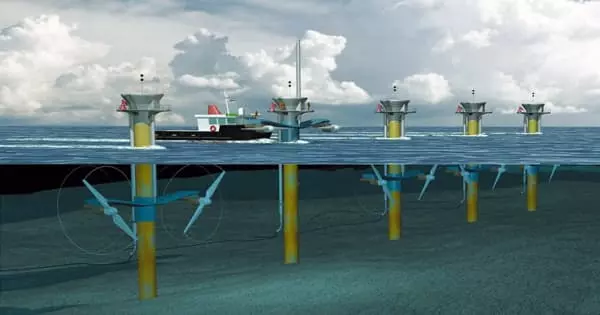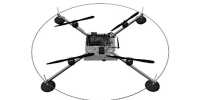The ocean can generate thermal energy from the sun’s heat as well as mechanical energy from tides and waves. The energy carried by the ocean’s waves, tides, and currents can be harnessed and converted into electricity to power homes, buildings, and cities. When waves crash against coastlines and tidal currents ebb and flow, this movement occurs naturally. Kinetic energy is the energy available in moving water, and it can be used to generate electricity.
New prototype technologies can double the power harvested from ocean waves, paving the way for wave energy to become a viable renewable alternative. Researchers have developed prototype technologies that can double the power harvested from ocean waves, paving the way for wave energy to become a viable renewable energy source.
The untapped potential of ocean wave energy is enormous; it has been estimated that the power of coastal waves worldwide each year is equivalent to annual global electricity production. However, the difficulties in developing technologies that can efficiently extract that natural power while also surviving the harsh ocean environment have kept wave energy at the experimental stage.
While wind and solar dominate the renewable market, they are only available 20-30% of the time. Our prototype technology overcomes some of the key technical challenges that have been impeding large-scale deployment in the wave energy industry. We hope that with further development, this technology will serve as the foundation for a thriving new renewable energy industry that will provide massive environmental and economic benefits.
Professor Xu Wang
Now, a research team led by RMIT University has developed a wave energy converter that harvests power twice as efficiently as any other similar technology developed to date. The breakthrough, which was published in the journal Applied Energy, is based on a world-first dual-turbine design.
Wave energy, according to lead researcher Professor Xu Wang, is one of the most promising sources of clean, reliable, and renewable energy. “While wind and solar dominate the renewable market, they are only available 20-30% of the time,” Wang explained.
“On average, wave energy is available 90% of the time, and the potential power contained in offshore waves is enormous. Our prototype technology overcomes some of the key technical challenges that have been impeding large-scale deployment in the wave energy industry. We hope that with further development, this technology will serve as the foundation for a thriving new renewable energy industry that will provide massive environmental and economic benefits.”

How the wave energy converter works
Harvesting wave energy via a buoy-type converter known as a “point absorber,” which is ideal for offshore locations, is one of the most popular experimental approaches. This energy-harvesting technology, which harvests energy from the up and down movement of waves, is generally inexpensive to manufacture and install. However, in order to harvest the energy efficiently, it must be precisely synchronized with the incoming wave movement. This usually entails a slew of sensors, actuators, and control processors, which adds complexity to the system and can lead to underperformance, as well as reliability and maintenance issues.
The RMIT-created prototype requires no special synching technology because it floats up and down with the swell of the wave.
“By always remaining in sync with the movement of the waves, we can maximize the amount of energy harvested,” Wang explained. “When combined with our patented counter-rotating dual turbine wheels, this prototype can more than double the output power harvested from ocean waves when compared to other experimental point absorber technologies.”
RMIT engineering researchers collaborated with researchers from China’s Beihang University to develop a simple and cost-effective device. Two turbine wheels, stacked on top of each other and rotating in opposite directions, are linked to a generator via shafts and a belt-pulley-driven transmission system. The generator is housed inside a buoy above the waterline to keep it out of the corrosive seawater and to extend the device’s lifespan.
The prototype has been tested successfully at the lab scale, and the research team is eager to collaborate with industry partners to test a full-scale model and work toward commercial viability. “We know it works in our labs, so the next step is to scale this technology up and test it in a tank or under real-world ocean conditions,” Wang explained.
“Exploiting our wave energy resource has the potential to not only reduce carbon emissions and create new green energy jobs, but it also has the potential to address other environmental issues. As the frequency of droughts increases, for example, wave energy could be used to power carbon-neutral desalination plants and supply fresh water to agriculture a smart adaptation to the challenge of climate change.”















